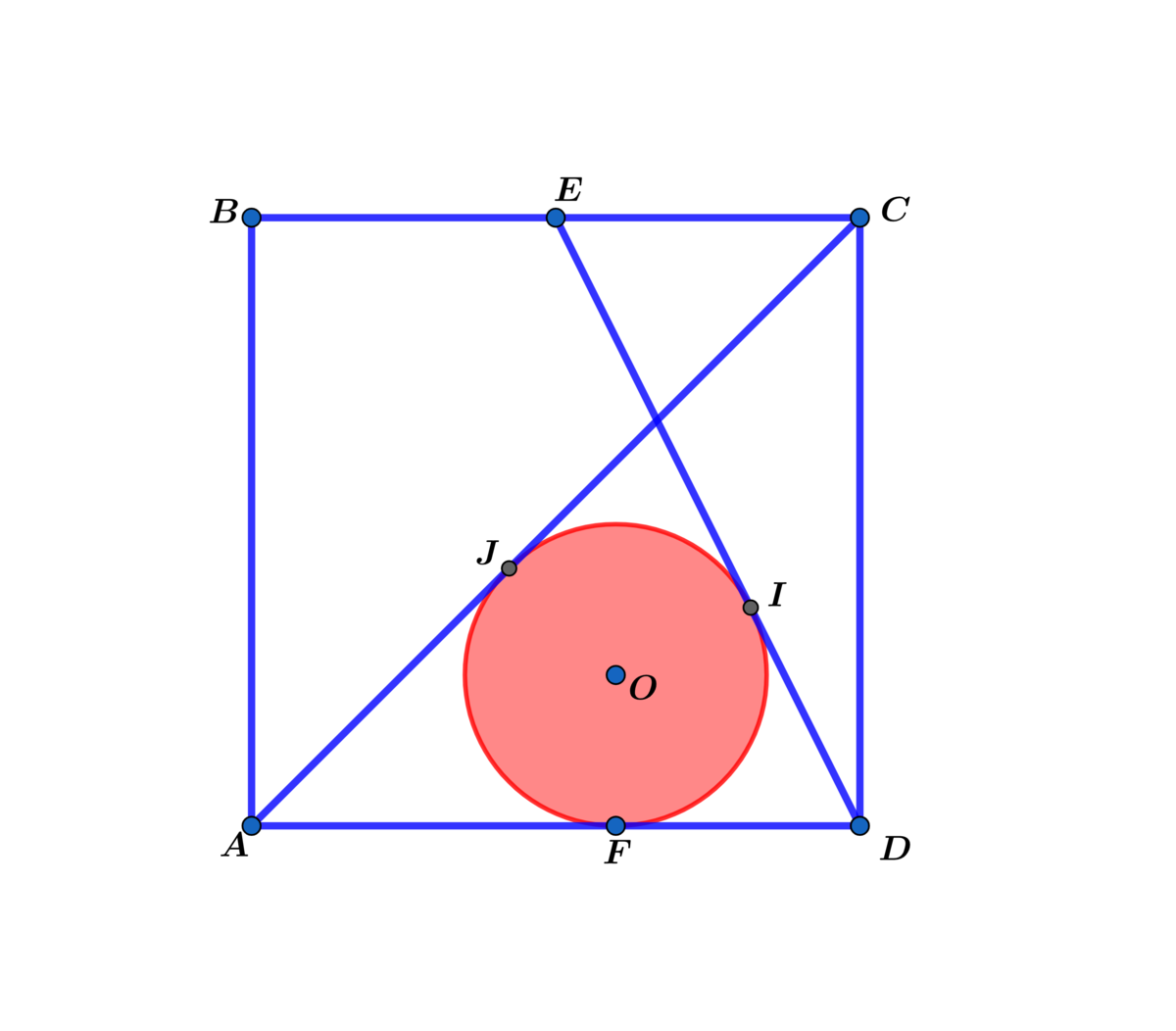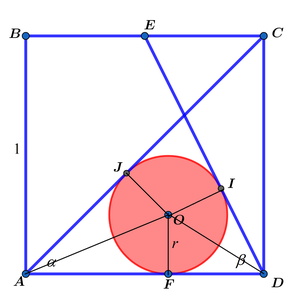What is the Radius?

In square A B C D with side length a , E is a midpoint of B C and diagonal A C , E D and A D is tangent to circle O with radius r at J , I and F respectively.
If a r = β + α α + λ α , where α , β and λ are coprime positive integers, find α + β + λ .
The answer is 10.
This section requires Javascript.
You are seeing this because something didn't load right. We suggest you, (a) try
refreshing the page, (b) enabling javascript if it is disabled on your browser and,
finally, (c)
loading the
non-javascript version of this page
. We're sorry about the hassle.
2 solutions
We can find inradius of a triangle without finding the area and perimeter of the triangle. Check out this solution.

Let a = 1 , ∠ C A D = α , and ∠ E D A = β . Note that A O bisects ∠ C A D and O D bisects ∠ E D A . Then we have:
A F + F D O F ⋅ cot ∠ O A F + O F cot O D F r cot 2 α + r ⋅ cot 2 β 2 − 1 r + 5 − 1 2 r r ⟹ a r = A D = A D = 1 = 1 = 2 − 1 1 + 5 − 1 2 1 = 2 − 1 2 + 1 + 5 − 1 2 ( 5 + 1 ) 1 = 2 + 1 + 2 5 + 1 1 = 3 + 2 2 + 5 2 Using tan 2 θ = sin θ 1 − cos θ (see note). Since a = 1
Therefore the required answer is 3 + 2 + 5 = 1 0 .
Note:
- We note that tan α = 1 ⟹ sin α = cos α = 2 1 ⟹ tan 2 α = sin α 1 − cos α = 2 − 1 .
- Similarly, tan β = 2 ⟹ sin β = 5 2 , cos α = 5 1 ⟹ tan 2 β = sin β 1 − cos β = 2 5 − 1 .
For A C : y = x and m E D = − 2 ⟹ y = − 2 x + 2 a ⟹ x = y = 3 2 a
⟹ G ( 3 2 a , 3 2 a ) ⟹ A G = 3 2 2 a and G D = 3 5 a
⟹ A △ A G D = 2 1 ( a ) ( 3 2 a ) = 3 a 2 = 2 a r ( 3 3 + 2 2 + 5 ) ⟹
2 a 2 − ( 3 + 2 2 + 5 ) a r = 0 ⟹ a ( 2 a − ( 3 + 2 2 + 5 ) r ) = 0 and
a = 0 ⟹ r = 3 + 2 2 + 5 2 a ⟹ a r = 3 + 2 2 + 5 2 = β + α α + λ α
⟹ α + β + λ = 1 0 .